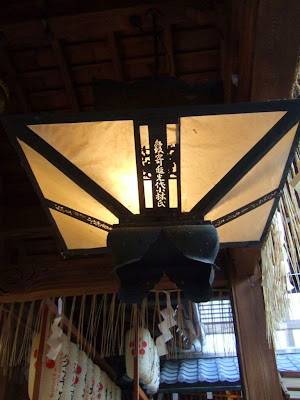
Nishiki Market, nicknamed as Kitchen of Kyoto, is a 40 meters long covered shopping street lined up by more than 100 shops and restaurants. Situating at the heart of Kyoto, the narrow alley is a retailing market purveying all kinds of things that are related to food like fresh seafood, pickles, farm produce, and cookware. It is a home to more than just food supplier as almost all the necessities of daily life can be found along it. All products are locally produced and procured.



The present Nishiki Market has a history of more than 400 years. It actually began as a fish wholesale district with first stall opened at year 1310. Wholesale business was gradually changed into retailing market after large number of shops moved in. Today it is a great place for locals and people from abroad to explore variety of Kyoto famous culinary delights.



The Kimono and Yukata clad made time traveled back to 16th century.



The 100 vendors crammed by both sides of the narrow street vary in sizes, from small scheme to as large as two storey shop.



Nishiki Market is rich with history and traditions and is the most iconic market in Japan. Several shops have been operated by families from generations.



Besides packaged pickles, fresh seasonal fermented pickles are also available at Nishiki Markets.



According to shop sellers, these cucumber and radish pickles only available in fall season. They had been fermented for 2 years.


These are all sampling pickles!


Have you seen the fresh Washabi stalk? Washabi plant can only survive growing along clean flow of spring water under an unpolluted environment. Traditionally, Japanese consume only fresh Washabi. They used little wooden scrapper to scrape out the paste from its stalk at the moment of using. People out of Japan hardly can have a chance to taste the fresh Washabi paste. What we are taking nowadays are powder made Washabi.


The local produce are so fresh and tempting. I just wish I can buy them home.



Chestnut reminds us that it is now the season of fall. Wafting through the air of the market is the aromas of roasted chestnut. Japan chestnut are so huge in size and so good to eat but the price is rather costly.



Fresh seafood corner.


Food stalls selling ready made and cooked food are so organizing and hygienic.



At the end of Nishiki Market, there is a small Shinto called Nishi Tenmangu. Its tori and entrance was squeezed within a commercialized covered arcade. The shopping surrounding makes it lively and bustling too.



Nishi Tenmangu Temple was dedicated to Tenman-Tenjin, the deity spirit of Sugawara No Michizane (845-903)who was a great scholar and an excellent poet in Chinese poetry during Heian Period (794-1185). Sugawara was regarded as God of Learning. The Temple was first established in early 10th century within the residence of Sugawara's father but was moved around until relocated to the present location after General Hideyoshi (1536-1598) reorganized the city of Kyoto in 1590s. The Temple was reduced in size to give way to the shopping arcade in 19th century by Meiji Government (1868-1912).



The spring water for purification prior to prayer, is pumped up from 37 meters below the ground. It was said that the pure spring water brings luck and make one look young.


People who came in the temple to make worship can put in 100 yen and pick his fortune from one of the three mechanical machines, a mechanic priest, a snake and a dragon. Make a wish, pull the rope and ring the bell is the usual practice.



In Nishi Tenmangu Temple, you also can write down your wish or request from the Kami (God) on a fortune paper and insert them into a round wooden ball hanged on the plum tree.


Looking for better opportunities in life, touch the right side of the sacred bull. This is the Tenjin Cow that played an important part in the mythology of Sugawara when he was deified into God of Learning.


Opposite Kamogawa River is Pontocho where many restaurants have open air patios built to overlooking the river.


The bank of Kamogawa River became a snuggling place for lovers and youngsters especially under the golden beam of setting sun.


No comments:
Post a Comment